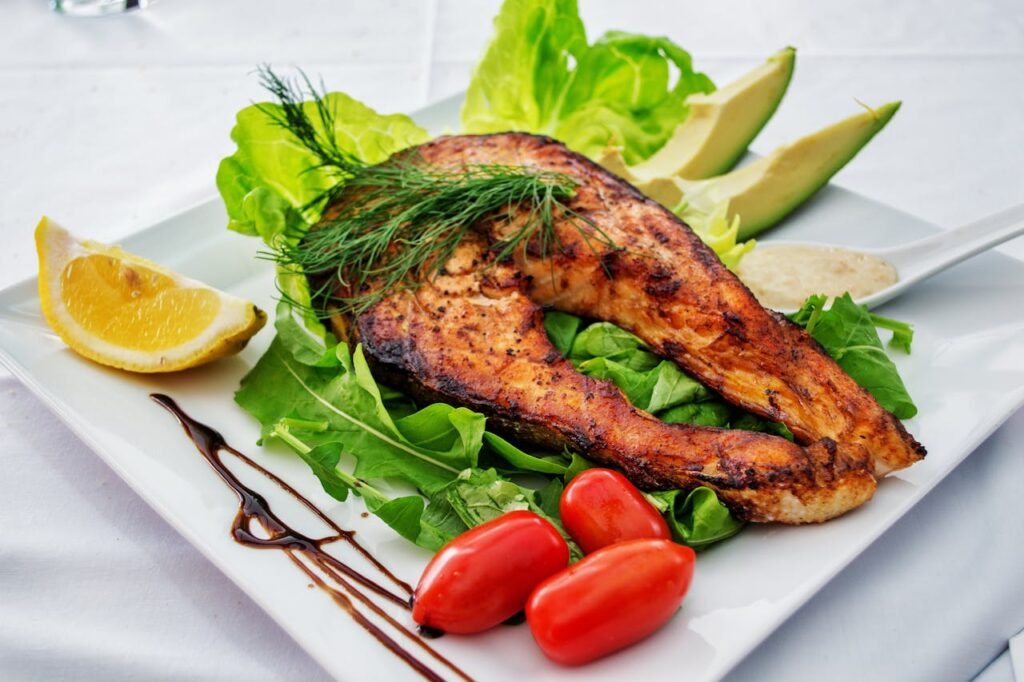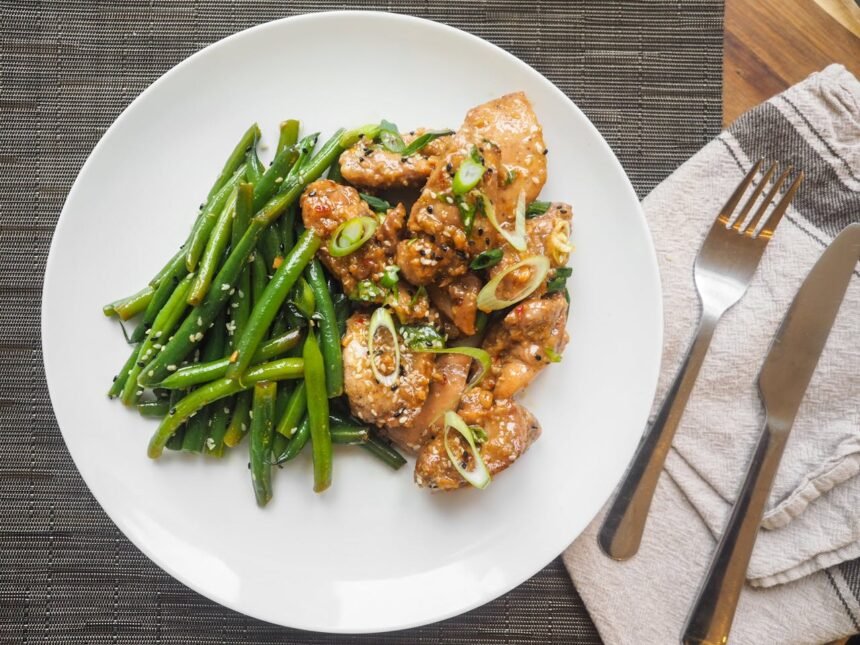Losing weight often means creating a calorie deficit, where you burn more energy than you consume. But the fear of constant hunger can make it daunting. The good news? You can design a satisfying meal plan that supports steady weight loss without leaving you feeling starved. This guide explores practical steps to craft your own plan, packed with nutrient-dense foods, clever swaps, and tips to stay full. Drawing from expert advice, we’ll cover everything from calculations to recipes, ensuring you enjoy the journey.healthline+1
Understanding Calorie Deficit Basics
A calorie deficit occurs when you consume fewer calories than your body needs for daily activities and rest. Typically, subtracting 500 calories daily from your maintenance level leads to about 0.5kg loss per week. It’s not just about eating less; combining diet with exercise boosts results. Focus on sustainable weight loss to avoid fatigue or nutrient gaps. Remember, individual needs vary by age, sex, height, and activity. Start by tracking your intake to spot easy reductions, like swapping sugary drinks for water. This approach keeps energy high while trimming fat.webmd+2
Calculating Your Daily Calorie Needs
First, determine your basal metabolic rate (BMR) using formulas like Harris-Benedict. For men: BMR = 88.362 + (13.397 × weight in kg) + (4.799 × height in cm) – (5.677 × age in years). For women, adjust accordingly. Multiply by activity level: sedentary (×1.2), lightly active (×1.375), etc. Subtract 500-750 calories for a safe deficit. Use online calculators for precision, factoring in goals like losing one pound weekly. Avoid drastic cuts to prevent side effects like headaches or slowed metabolism. Tailor to your lifestyle for long-term success.signos+2
Choosing Nutrient-Dense Foods
Prioritise high-volume foods that fill you up with fewer calories, such as leafy greens, berries, and lean proteins. These provide fibre and protein to curb hunger. Include whole grains like oats or quinoa for sustained energy. Opt for low-calorie vegetables including broccoli, spinach, and cucumbers to bulk meals. Add healthy fats from avocados or nuts in moderation. Avoid empty calories from processed snacks. This strategy ensures you feel satisfied while maintaining a deficit, supporting overall health and preventing deprivation. Experiment with herbs and spices for flavour without extra calories.medicalnewstoday+2
Incorporating Protein for Satiety
Protein is key in a deficit diet as it promotes fullness and preserves muscle. Aim for sources like chicken, fish, eggs, or plant-based options such as tofu and lentils. Include it in every meal: Greek yoghurt for breakfast, turkey in lunch wraps, or salmon for dinner. Studies show high-protein intake reduces cravings. Combine with fibre-rich veggies for maximum effect. This helps you stick to your plan without feeling restricted, making weight management easier. Remember, variety prevents boredom—try new recipes weekly.eleatcereal+2
Boosting Fibre Intake Naturally
Fibre slows digestion, helping you stay full longer on a low-energy plan. Load up on fruits like apples, pears, and berries, plus veggies such as carrots and kale. Whole grains like brown rice add bulk. Aim for 25-30g daily to avoid constipation, a common deficit side effect. Simple swaps: choose popcorn over crisps or add beans to salads. This not only aids digestion health but also stabilises blood sugar, reducing hunger spikes. Track progress to ensure you’re hitting targets without overcomplicating meals.mayoclinic+1
Smart Swaps to Cut Calories
Make easy substitutions to lower intake without sacrificing taste. Replace white bread with wholemeal options for more fibre. Use Greek yoghurt instead of sour cream for creaminess. Opt for cooking sprays over oils to trim hidden fats. Swap fizzy drinks for herbal teas or infused water. These changes create a subtle deficit while keeping meals enjoyable. For snacks, choose air-popped popcorn or veggie sticks with hummus over processed bars. Over time, these habits build a sustainable routine, helping you achieve fat reduction goals effortlessly.adityabirlacapital+1
Planning Balanced Meals
Structure your day with three meals and two snacks to maintain energy. Breakfast: oats with berries and nuts. Lunch: grilled chicken salad with mixed greens. Dinner: baked fish with roasted veggies. Snacks: apple with almond butter or carrot sticks. This balanced approach ensures nutrient variety, preventing deficiencies. Portion control is crucial—use smaller plates to trick your mind. Focus on colourful plates for visual appeal and health benefits. Adjust based on activity; add more if exercising to avoid fatigue.medicalnewstoday+1
Sample 7-Day Meal Plan
Kick off with Day 1: Breakfast—Greek yoghurt with berries and seeds; Lunch—tuna salad with quinoa; Dinner—baked salmon and carrots. Day 2: Oatmeal with eggs; Chickpea pasta with turkey; Trail mix snack. Continue varying proteins and veggies. Day 3: Smoothie with spinach; Turkey pita; Veggie stir-fry. This weekly structure totals around 1500 calories, promoting steady loss. Customise for preferences, ensuring high fibre and protein. Track to stay in deficit without hunger.goodhousekeeping+1
Easy Low-Calorie Recipes
Try mushroom quesadillas: Sauté veggies, add low-fat cheese, wrap in tortilla—under 300 calories. Or beet orzotto for a vibrant pasta alternative. For quick dinners, sheet pan fajitas with chicken and peppers. Zucchini linguine lightens carbs. These flavourful dishes prove deficits can be delicious. Prep in advance for convenience, using fresh herbs for zest. Each serves as a building block for your plan, keeping things exciting.goodhousekeeping+1
Breakfast Ideas Under 300 Calories
Start with plain yoghurt topped with nuts and fruit. Or a veggie omelette with egg whites. Wholegrain toast with avocado provides healthy fats. Smoothies blending greens, protein powder, and berries are quick. These morning boosts set a positive tone, preventing mid-morning slumps. Focus on volume to feel full; add cinnamon for natural sweetness. Rotate options to avoid routine fatigue.webmd
Lunch Options for Busy Days
Pack a chickpea salad with feta and walnuts. Or a turkey wrap with lettuce and mustard. Bean stew offers warmth and protein. These midday meals clock in low, around 400 calories, sustaining energy. Prep ahead for grab-and-go ease. Include diverse veggies for micronutrients.berrystreet+1

Dinner Recipes to Satisfy
Roast pork with squash. Or chorizo-stuffed zucchini for variety. Lentil salad with burrata adds creaminess. Aim for 500 calories max, emphasising lean meats and plants. These evening choices help wind down without overeating.goodhousekeeping+1
Snack Hacks to Curb Cravings
Choose apple slices with peanut butter or hummus-dipped veggies. Hard-boiled eggs pair well with fruit. Homemade trail mix with nuts and dried fruit. These hunger busters keep calories low while providing nutrients. Time them strategically between meals.signos
Staying Hydrated and Mindful
Drink water before meals to reduce appetite. Herbal teas count too. Mindful eating—savour each bite—prevents overconsumption. This hydration strategy supports metabolism and fullness. Avoid distractions during meals for better awareness.adityabirlacapital
Exercise to Enhance Deficit
Combine cardio like walking with strength training. This burns extra calories, allowing more food flexibility. Aim for 150 minutes weekly. Activities boost mood, making the plan enjoyable.adityabirlacapital
Tracking Progress Effectively
Use apps to log food and monitor deficits. Weigh weekly, not daily, for accurate trends. Adjust as needed if progress stalls. This monitoring method ensures accountability without obsession.eleatcereal
Common Mistakes to Avoid
Don’t skip meals—it leads to binges. Ignore extreme deficits that cause fatigue. Balance macros; too few carbs can drain energy. Stay consistent for results.webmd
Long-Term Sustainability Tips
View this as a lifestyle, not a diet. Allow occasional treats to prevent burnout. Reassess needs every few months. Build habits like meal prepping for ease.
What is a safe calorie deficit for beginners?
A 500-calorie daily reduction is ideal, leading to 0.5kg weekly loss without risks.nhlbi.nih+1
How can I avoid feeling hungry on this plan?
Incorporate high-fibre and protein-rich foods, stay hydrated, and eat volumous meals.mayoclinic+1
Can I include treats in my meal plan?
Yes, in moderation—budget calories for occasional indulgences to maintain motivation.adityabirlacapital
How long should I follow a deficit?
Until you reach your goal, then transition to maintenance. Reassess every 4-6 weeks.myprotein
What if I plateau?
Adjust exercise, recalculate needs, or vary meals to reignite progress.webmd
Is exercise necessary?
It enhances results but isn’t mandatory; focus on diet first.medicalnewstoday
How do I calculate macros?
Aim for 30% protein, 30% carbs, 40% fat, adjusting as needed.fitkitchen
- https://www.healthline.com/nutrition/1500-calorie-diet
- https://www.webmd.com/diet/calorie-deficit
- https://www.medicalnewstoday.com/articles/calorie-deficit
- https://eleatcereal.com/blogs/news/how-to-stay-in-a-calorie-deficit
- https://www.signos.com/blog/calorie-deficit-meal-plan
- https://www.myprotein.co.in/blog/nutrition/how-to-calculate-a-calorie-deficit-easy-steps/
- https://www.mayoclinic.org/healthy-lifestyle/weight-loss/in-depth/weight-loss/art-20044318
- https://www.adityabirlacapital.com/healthinsurance/active-together/2025/01/02/calorie-deficit-to-lose-weight/
- https://www.goodhousekeeping.com/health/diet-nutrition/g4351/1200-calorie-diet-plan/
- https://www.goodhousekeeping.com/food-recipes/healthy/g4259/low-calorie-meals/
- https://www.berrystreet.co/blog/calorie-deficit-meal-plan
- https://www.nhlbi.nih.gov/health/educational/lose_wt/eat/calories.htm
- https://fitkitchen.ca/faq/meal-plan-q-a/
- https://www.txliver.com/wp-content/uploads/2015/08/1000-Calorie-Meal-Plans.pdf
- https://www.myprotein.co.in/blog/recipe/low-calorie-meal-prep/
- https://www.eatingwell.com/article/17375/7-day-diet-meal-plan-to-lose-weight-1200-calories/
- https://www.nhlbi.nih.gov/health/educational/lose_wt/eat/menus_tac_1200.htm
- https://www.tasteofhome.com/collection/low-calorie-dinner-recipes-ready-in-30-minutes/
- https://scitron.com/blogs/blog/what-is-a-calorie-deficit-diet-and-how-to-follow-it
- https://www.mountsinai.org/files/MSHealth/Assets/HS/MonthlyMealPlan_Brochure_Rev24.pdf






